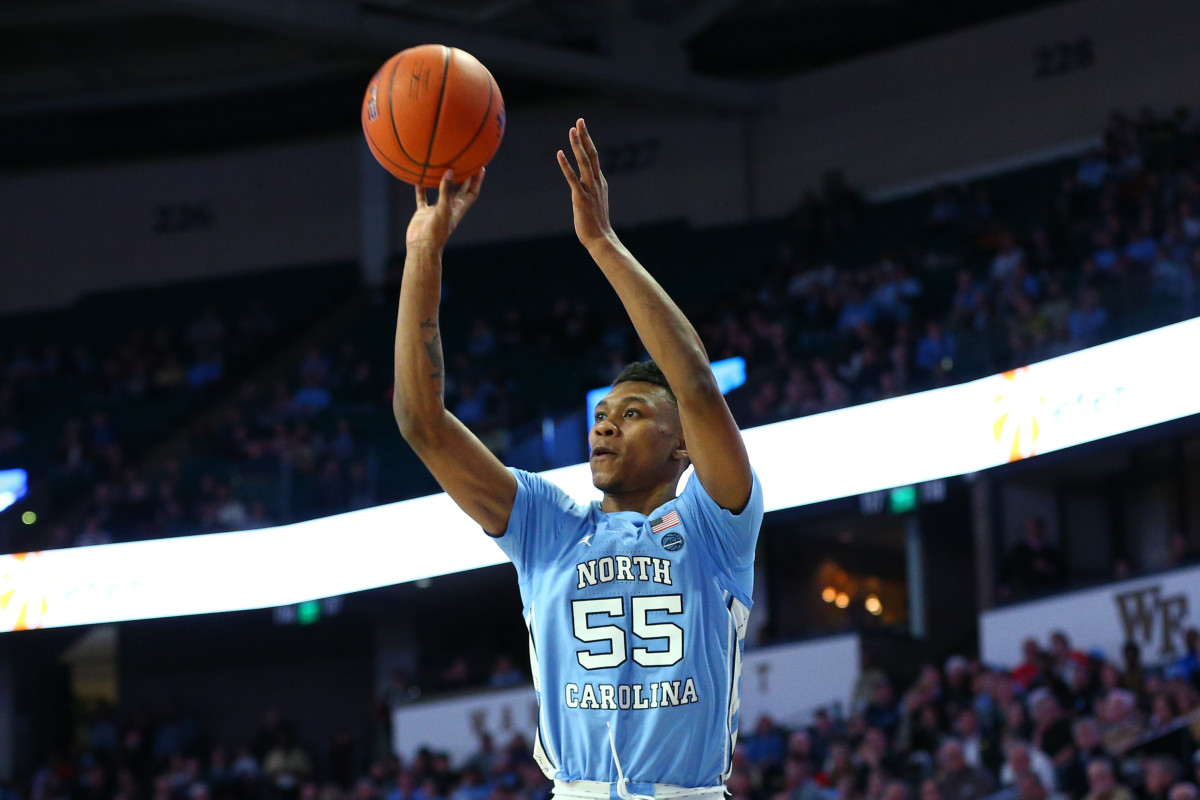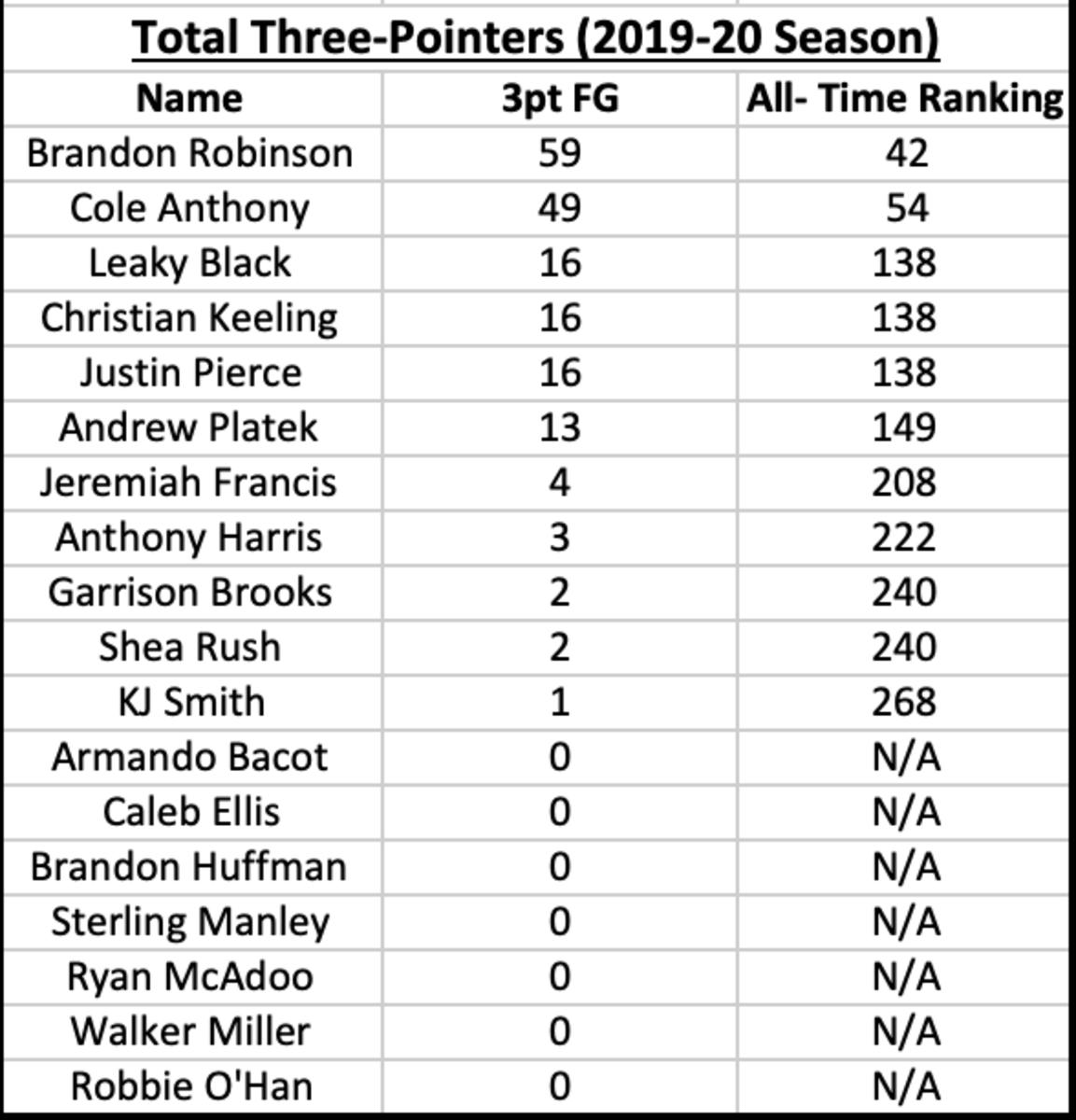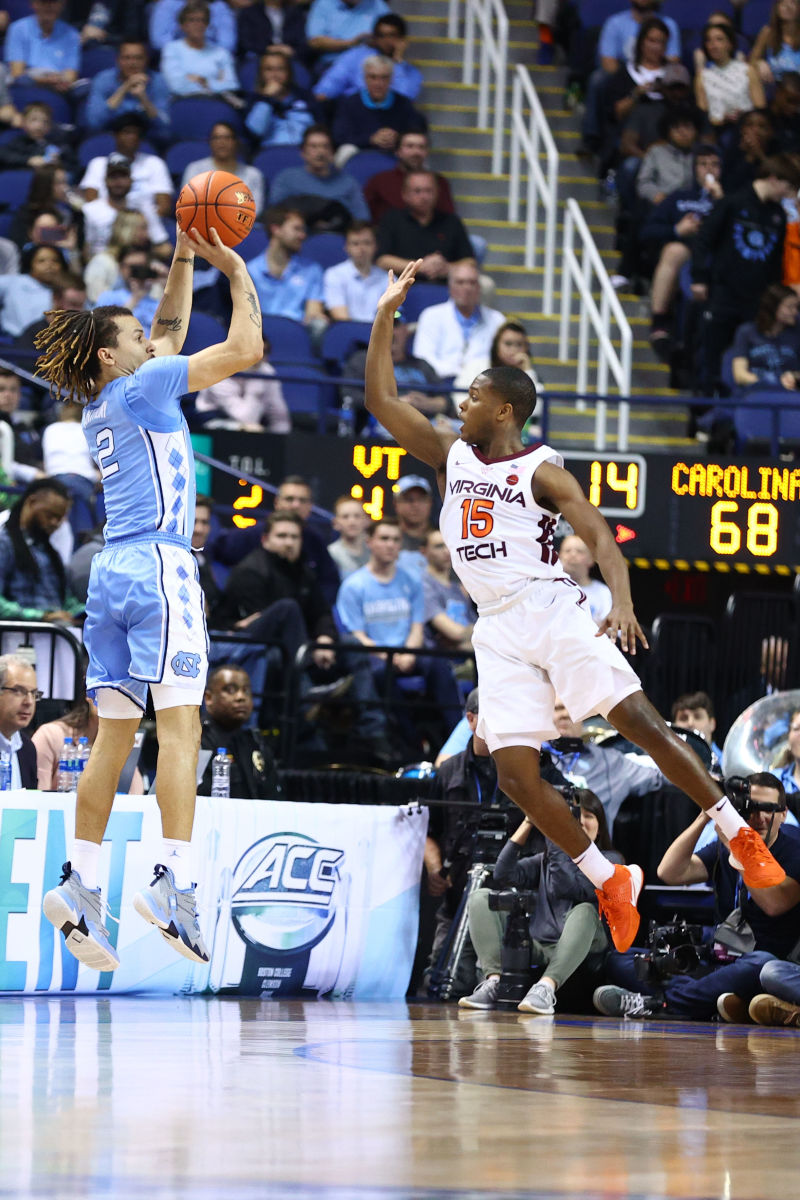UNC Basketball: 2019-20 Stats in Review - Made Three-Pointers
In 1986-87, the NCAA universally adopted the three-point shot. Though it’s been around for nearly 35 years, only in the past decade or so have teams begun to embrace analytics and therefore the value of the three-point shot.
While teams like Villanova were early adopters of lineups that made use of four shooters around one big man, Roy Williams still prefers the traditional two big man lineup. It’s not that UNC doesn’t value the three-point shot, it’s that Coach Williams puts more emphasis on getting the best shot near the rim.
Why? The consistency of making three-point shots can vary wildly in the small sample size of one game to the next. However, lay-ups, dunks, and other short shots around the rim offer a higher level of consistent dependability.
Would you rather try to win six games in March and April with the dependability of pounding the ball inside or rely on the three and risk a cold shooting night, which could end your season? Coach Williams is going with the former option every day of the week.
At the same time, if your team is incapable of shooting from the outside, defenses will sag off shooters and pack the paint. At that point the big men don’t have any room to operate and it doesn’t matter how dependable shots around the rim are because you won’t get any.
So while Roy Williams teams may not be “three happy”, they certainly utilize the outside shot as a valuable and important weapon in their arsenal.

Over the course of the next several weeks, I’ll be reviewing the stats from the 2019-20 North Carolina basketball team, one category at a time. We’ve already looked at total points, total rebounds, and total assists. We move today to made three-pointers.
As a reminder: while these stats won’t tell the whole story of the season, they will help provide context and insight for both the present and historical context.
The following chart will list each player, how many three-pointers they hit, and where they ranked in the Carolina history books for total three-pointers in a single season.

Observations
- Only two players made more than 16 threes, Cole Anthony and Brandon Robinson. This also happened in 2013-14 where only Marcus Paige and Leslie McDonald had more than 16. In 2009-10, three players had 16+ (Will Graves, Larry Drew, and Marcus Ginyard). Other than those three teams, every other team dating back to the 1998-99 season has had at least four players hit more than 16 threes.
- An interesting tidbit: The historically bad 8-20 season was the one with the most players hitting 16+ threes in Carolina history. Seven different players had more than 16 made threes, but in this balanced three-point shooting attack, no one had more than Brian Morrison’s 42.
- Cole Anthony missed 11 games. Brandon Robinson missed nine games. So the two leading three-point shooters missed a total of 20 games. This, in part, explains why the two leading three-point shooters only hit 59 (Robinson) and 49 (Anthony) threes.
- Robinson’s 59 made threes are the fewest to lead the team in the Roy Williams era and the fewest to lead any Carolina team since Brian Morrison’s 42 in 2001-02.
- Robinson and Anthony combined to make 108 threes. Just a few years ago Justin Jackson set the Carolina single-season record by making 105 by himself.
- As a team, Carolina hit 181 threes, the third-lowest of the Roy Williams era. The only two lower totals were 176 in 2009-10 and an anemic 146 in 2013-14.
- Last season, Cam Johnson and Coby White combined to make 178 threes, just three fewer than the entire team made in 2019-20.
Conclusions

Once again, numbers don’t tell the whole story, but they do help tell the story. So what story do these numbers help tell?
First off, any time your top two shooters miss a combined 20 games, it’s going to hurt your ability to make threes and to unclog the lane. That was just a sheer reality of this season.
Secondly, part of the sheer lower number of made baskets is due to playing fewer games. The 2019-20 Tar Heels played 33 games instead of something closer to 40 if they had advanced further in the ACC Tournament or made the NCAA Tournament. Of course, with the way things played out, they would have played only one more game in the ACC Tournament before everything was canceled.
Thirdly, this team just didn’t have a lethal knock-down shooter in the mold of a Cam Johnson. Robinson and Anthony were the closest things to that this year and neither shot above 37 percent. Keep in mind, Johnson made 96 threes last year while shooting 45.7 percent.
Looking to next year, Carolina still doesn’t have a proven commodity ready to step in and be that guy from deep. There are some possibilities with the incoming freshmen, but as I’ll explain in an article later this summer, freshmen don’t have a history of stepping in and producing in year one from beyond the arc for the Roy Williams-coached Tar Heels.
Carolina will have several dominant big men next year. Who will be the one to step up and make threes to free some space? Time will tell.
Next stat to investigate on Friday, May 29 from the 2019-20 Tar Heels: Blocks.
You can follow us for future coverage by clicking "Follow" on the top righthand corner of the page.
Follow us on Twitter: @SI_HEELS | @isaacschade
Please post any comments below!
